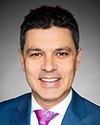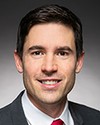In fact, we did look at those numbers. Based on what we expected would be landed value, there simply wasn't any way, mathematically, to make that allocation work while also respecting any type of regional fairness across the board.
Evidence of meeting #4 for Fisheries and Oceans in the 45th Parliament, 1st session. (The original version is on Parliament’s site, as are the minutes.) The winning word was redfish.
A recording is available from Parliament.



